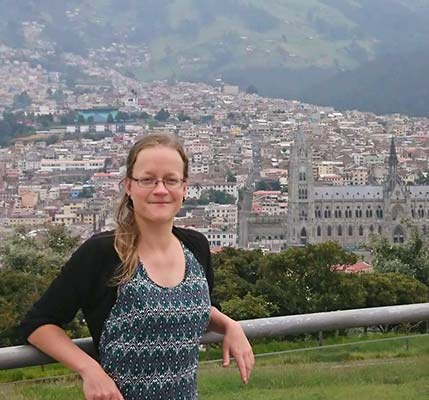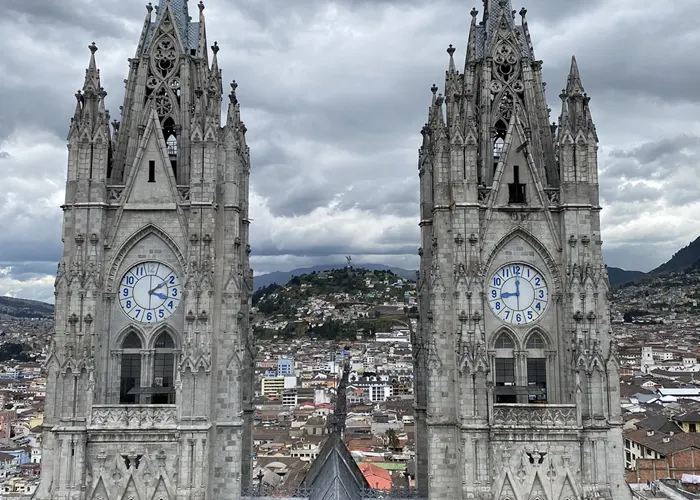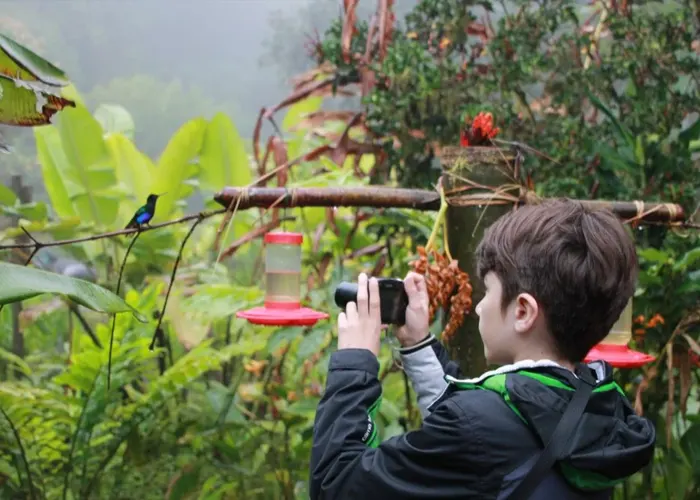A new era of transportation: The new metro of Quito

Maria S.
Quito has a metro. What sounds completely normal for many other cities was a construction project for Quito that took years, delayed by the difficult geological situation and archaeological finds in the area of Quito’s old town. The metro has officially been in operation since 1.12.2023. It represents a significant development for public transport in the Ecuadorian capital.
The need for an additional means of transportation
Public transportation, which was already struggling with continuously rising user numbers, was an important issue during the mayoral elections in 2009. Under the then elected mayor Augusto Barrera, the Quito Metro project was initiated in order to relieve the existing system of Ecovia, Trolebus and Metrobus, which was operating at its limits, and also to reduce the contamination caused by the increasingly dense traffic.
To this end, a separate department was set up within the public transport company.

Almost 20 years of construction
The costs amounted to around USD 2009 million. Various loans were raised for the financing, e.g. from the World Bank, Banco del Estado and BNDES de Brasil.
The metro was built in two stages. Construction of the El Labrador and La Magdalena (Quitumbe) stations began in January 2013. Construction of the tunnel and the other stations and facilities did not start until three years later. The tunnel runs at a depth of 8.26 – 22.92 meters. The entire system is designed to withstand earthquakes with a magnitude of up to 7.8.
The 18 trains of the metro were manufactured in Spain and brought to Ecuador by ship.
Controversy arose during the tunnel work under the Historical Center of Quito. During the work, several historical constructions were found that could date back to Inca or colonial times. A citizens’ initiative then called for the construction work to be stopped until a statement from the National Institute of Cultural Heritage was available. The municipal Institute for Cultural Heritage then took over the protection of the vestiges. Construction work was resumed, but this time accompanied by the use of radar equipment capable of detecting possible undiscovered archaeological remains at a depth of 10 and 40 meters.
The archaeological finds will be permanently displayed in the San Francisco metro station so that passengers can learn more about the city’s colonial past during their daily journeys.
A fast and environmentally friendly north-south connection
Due to the large north-south extension of the city, it has always been a long way to the interregional bus terminals, which are located in the north and south of the city respectively. The 22.5 km long route of the Quito Metro comprises 15 stations and connects the northern part of the city (El Labrador) with the southern part (Quitumbe). The journey time over the entire route is around 34 minutes, which represents a significant reduction in previous travel times. There are connecting buses from El Labrador station to the northern Carcelen bus terminal.
The metro can carry up to 400,000 passengers a day and makes a significant contribution to reducing CO2 emissions. It is estimated that the metro will save around 67,000 tons of CO2 per year, which is very significant given the high emissions from urban transport to date. The metro is integrated into the existing urban transport network. There are connections to the BRT (Bus Rapit Transit) and trolleybus lines, providing seamless mobility for residents. In addition, special emphasis was placed on passenger safety and comfort when planning the metro. Surveillance systems and emergency buttons were provided for the safety of women as well as facilities for people with disabilities.
In the first few days of operation, over 273,000 passengers have already been transported, which shows the high level of acceptance and demand for this new transport infrastructure. The metro is seen by many as a game changer for the city.
My personal experience with the metro

During my last stay in Ecuador in early 2024, I took the metro myself for the first time. I got on at the San Francisco stop, a conveniently located station if you are traveling in the old town. I was impressed by its modernity and cleanliness – especially compared to other inner-city stops and bus stations.
At 45 cents for a one-way trip, the ticket price is 10 cents more expensive than a trip on the city buses, but I think it’s justified given the comfort and speed of travel.
On the other hand, buying tickets is still a little inconvenient, either with suitable coins at one of two ticket machines or at a few counters if you don’t have the exact change. This can involve long queues, especially at peak times. On my trips, however, I was usually lucky and didn’t have to wait long.
I have to admit, it was a strange feeling to be driving underground in an earthquake zone and surrounded by volcanoes, some of which were active. But here, as in many other situations, you have to trust in the technology and knowledge of the engineers and designers. The only thing I would have to criticize was that it was often quite stuffy in the trains themselves. Apart from that, I found the journeys very pleasant, clean and I always felt safe. It is also helpful for those not familiar with the area that the next stop is both announced and announced, a significant improvement compared to the city buses.
Would you like to experience the Quito metro for yourself and get to know the city better?
We will show you how to do this on one of our city tours before or after you explore other parts of the country, for example on an individual round trip.
visit our other channels
Newsletter Signup Form
Recent Posts
- Travel Tip Peru – Trujillo March 21, 2025
- Galapagos Travel: Everything You Need to Know for Your Trip March 7, 2025
- Travel Tip Peru – Machu Picchu February 21, 2025
- Travel Tip Peru – Valle Sagrado – The Sacred Valley February 7, 2025
- Travel tip Peru – Lima January 24, 2025


